How to Grow Cinnamon Basil: A Beginner’s Guide to Aromatic Gardening
- March 15, 2024
- 0 comment
Learn how to grow Cinnamon Basil with our concise guide, covering sunlight, soil, and water needs to ensure your herb thrives in the garden or container. This guide will walk you through the process, ensuring your cinnamon basil flourishes whether planted in your garden or a container.

Benefits of Cinnamon Basil
| Benefit | Description |
|---|---|
| Culinary Uses | Cinnamon basil has a unique flavor that combines traditional basil taste with a hint of cinnamon, making it excellent for culinary uses in a variety of dishes, especially in Italian and Asian cuisines. |
| Aromatic Properties | The distinct cinnamon scent of the leaves makes it a popular choice for aromatic purposes, such as in potpourris and sachets. |
| Medicinal Benefits | Similar to other basil varieties, cinnamon basil is believed to have anti-inflammatory, antibacterial, and antioxidant properties. It’s also used in some traditional medicine for its potential health benefits. |
| Garden Aesthetic | With its attractive green leaves and pink flowers, cinnamon basil adds beauty to gardens and can be used in ornamental plantings. |
| Attracts Pollinators | The flowers of cinnamon basil attract beneficial pollinators like bees and butterflies, which are important for garden health and biodiversity. |
| Easy to Grow | Like most basil varieties, cinnamon basil is relatively easy to grow, making it suitable for novice gardeners and those with limited space. |
| Versatile in Growing Conditions | It can be grown both in-ground and in containers, offering flexibility for gardeners with different space and soil conditions. |
| Natural Pest Repellent | The strong scent of cinnamon basil can act as a natural pest repellent in the garden, helping to keep certain insects away from other plants. |
| Herbal Tea Ingredient | Leaves of cinnamon basil can be used to make a flavorful and aromatic herbal tea, often enjoyed for its soothing properties. |
| Nutritional Content | Cinnamon basil is a source of vitamins and minerals, including Vitamin K, Vitamin A, iron, and calcium, contributing to a healthy diet. |
Before diving into the cultivation process, it’s important to understand what makes cinnamon basil special. This herb, scientifically known as Ocimum basilicum ‘Cinnamon’, has glossy, green leaves with a reddish-purple vein running through them and produces small, pink flowers when mature. It is an annual plant, meaning it completes its life cycle within one year.
List on How To Grow Cinnamon Basil
- Choosing the Right Location
- Soil Preparation
- Planting
- Watering and Feeding
- Pruning and Harvesting
- Pest and Disease Management
- Overwintering
Choosing the Right Location
Cinnamon basil thrives in a location that receives plenty of sunlight. Choose a spot in your garden that gets at least 6 to 8 hours of direct sunlight daily. If you’re planting in containers, ensure they are placed in a sunny area.

Sunlight Requirements
- Cinnamon basil, like most basil varieties, loves the sun. It requires at least 6 to 8 hours of direct sunlight per day.
- The sunlight not only drives photosynthesis but also helps in the development of the oils that give the basil its distinctive cinnamon scent and flavor.
- In regions with very hot summers, some afternoon shade might be beneficial to prevent the plant from getting scorched.
Choosing the Ideal Spot in Your Garden
- Look for a spot that gets consistent sunlight throughout the day. The east or west side of your garden can be ideal if it receives ample morning or afternoon sun.
- Avoid planting near larger plants or trees that may cast a shadow over your basil for a significant part of the day.
Soil Considerations
- Cinnamon basil prefers a well-drained soil. Heavy, clay-rich soil can retain too much moisture and lead to root rot.
- The soil should be fertile, with a neutral to slightly acidic pH. You can amend your soil with compost or a balanced organic fertilizer to improve its quality.
Soil Preparation
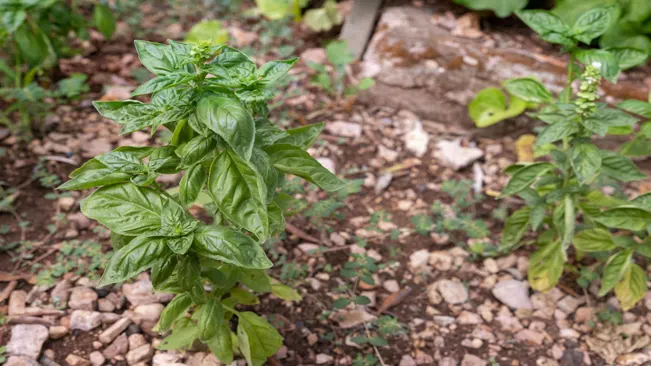
Soil Preferences for Cinnamon Basil
Cinnamon basil thrives in soil that is:
- Well-Drained: This means the soil should allow excess water to drain away quickly. Standing water or overly soggy soil can lead to root rot, which is detrimental to the plant.
- Fertile: Fertility refers to the richness of the soil in nutrients that the plant needs to grow. A fertile soil will have a good mix of essential nutrients like nitrogen, phosphorus, and potassium.
Preparing Soil in the Ground
- Testing the Soil: Before planting, it’s a good idea to test your soil’s pH and nutrient levels. Cinnamon basil prefers a slightly acidic to neutral pH, around 6.0 to 7.5.
- Enriching the Soil:
- Compost: Adding compost is one of the best ways to enrich your soil. Compost improves soil structure, adds essential nutrients, and increases its water-holding capacity.
- Organic Fertilizers: These are a great addition, especially if your soil is lacking in nutrients. A balanced organic fertilizer (with equal parts nitrogen, phosphorus, and potassium) can provide a slow-release of nutrients.
Preparing Soil in Containers
- Selecting Potting Mix: Choose a high-quality potting mix rather than using garden soil. Potting mixes are specifically designed to provide good drainage and nutrient content for container plants.
- Ensuring Drainage: Make sure your container has holes at the bottom for excess water to escape. You can also add a layer of gravel or similar material at the bottom to improve drainage.
Planting
Starting from Seeds
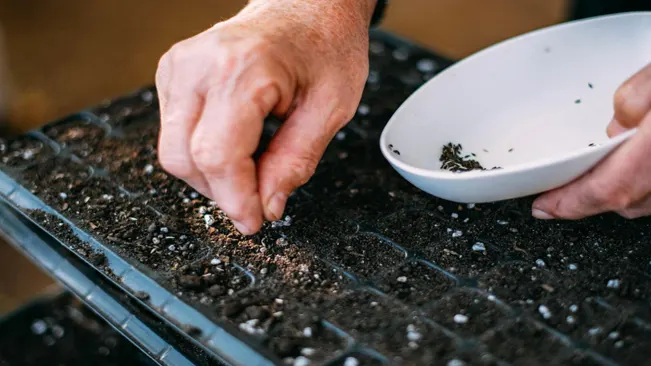
- Choosing Seeds: Select high-quality cinnamon basil seeds from a reputable source. This ensures a better germination rate and healthier plants.
- Indoor Sowing: Begin by sowing seeds indoors. The reason for this is to protect the seedlings from any late frosts and to give them a head start in growth.
- Timing: Sow the seeds 6 to 8 weeks before the last expected frost date in your area. This timing is crucial to ensure that the seedlings are strong enough to be transplanted outdoors when the weather warms.
- Seed Trays and Soil: Use seed trays or small pots filled with a seed starting mix, which is lighter and more sterile than regular garden soil, promoting better seed germination.
- Planting Depth and Spacing: Sow the seeds at a shallow depth, about 1/4 inch deep. You can sprinkle a few seeds in each cell or pot.
- Moisture and Temperature: Keep the soil consistently moist but not waterlogged. Cinnamon basil seeds require a warm environment to germinate, so maintaining a temperature around 70°F (21°C) is ideal.
- Light Requirements: After germination, ensure the seedlings receive plenty of light. A sunny windowsill or a grow light can provide the necessary light if natural sunlight is insufficient.
- Thinning Seedlings: Once the seedlings have a few sets of leaves, thin them out, keeping only the strongest one in each cell or pot.
Transplanting to Outdoor Garden
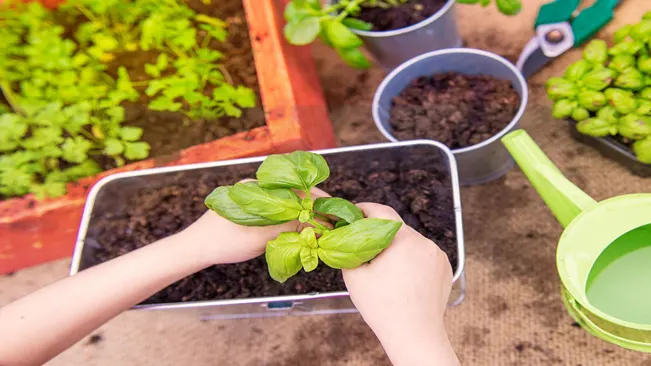
- Hardening Off: Before transplanting outdoors, it’s crucial to ‘harden off’ the seedlings. This process involves gradually exposing them to outdoor conditions over a week or so to reduce transplant shock.
- Choosing the Right Time: Transplant the seedlings outdoors once the danger of frost has passed and the soil has warmed.
- Soil Preparation: Prepare your garden bed by loosening the soil and enriching it with compost or organic matter. Cinnamon basil thrives in well-drained, fertile soil.
- Spacing Plants: Space the plants about 10 to 12 inches apart. This spacing allows enough room for each plant to grow and ensures adequate air circulation, which helps prevent fungal diseases.
- Planting: Dig a hole for each seedling, gently remove it from the pot, and place it in the hole. The top of the root ball should be level with the soil surface. Backfill with soil and press down gently.
- Watering After Transplanting: Water the seedlings well after planting to settle the soil around the roots and help alleviate transplant shock.
- Mulching: Apply a layer of mulch around the plants to help retain soil moisture and suppress weeds.
Watering and Feeding
Cinnamon basil needs regular watering, especially during dry spells. Keep the soil consistently moist but not waterlogged. Over-watering can lead to root rot. Feed the plants every four to six weeks with a balanced, water-soluble fertilizer.
Watering
Cinnamon basil, like most basil varieties, prefers a consistent level of moisture in the soil. Here are key points to consider for effective watering:
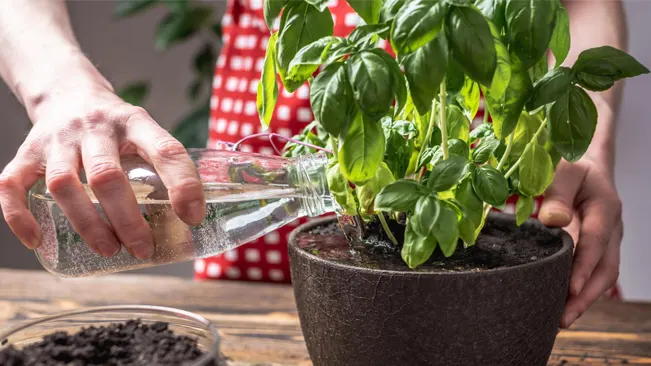
- Consistency: It’s crucial to maintain a balance in soil moisture. The soil should feel moist to the touch, but not overly soggy or waterlogged.
- Frequency: The frequency of watering will depend on factors like climate, weather conditions, and soil type. In general, watering once every few days during hot, dry periods is necessary. In cooler, cloudier weather, watering may be needed less frequently.
- Method: When watering, aim for the base of the plant rather than the leaves. This approach helps reduce the risk of leaf diseases and ensures that the water reaches the roots where it’s needed.
- Monitoring: The best way to determine if your cinnamon basil needs water is to check the top inch of soil. If it feels dry, it’s time to water.
Feeding
Feeding or fertilizing your cinnamon basil is crucial for promoting healthy growth and maximizing the yield and quality of the leaves. Here are some tips for effective feeding:

- Fertilizer Type: Use a balanced, water-soluble fertilizer. Balanced fertilizers have equal parts of the primary nutrients: nitrogen, phosphorus, and potassium (often labeled as N-P-K).
- Frequency: Applying fertilizer every four to six weeks during the growing season is generally sufficient. This regular feeding schedule supports steady growth.
- Application: Follow the instructions on the fertilizer packaging for dilution and application rates. Over-fertilizing can be harmful, leading to poor plant health or even death.
- Organic Options: If you prefer organic gardening, you can use compost or organic fertilizers. These options release nutrients more slowly and improve soil health over time.
- Observation: Pay attention to your plant’s growth and appearance. Signs of under-fertilizing include slow growth and pale leaves. Signs of over-fertilizing include yellowing leaves, leaf burn, or wilting.
Pruning and Harvesting
Pruning Cinnamon Basil

- Timing: Pruning should begin when the plant is about 6 to 8 inches tall. This encourages the plant to become bushier rather than just growing tall and thin.
- Technique: To prune, use your fingers or a pair of clean scissors to pinch off the tips of the plant. Focus on the areas where you see new leaves forming (the nodes). This will stimulate the plant to produce two new stems from the point of each cut.
- Flower Buds: Keep an eye out for flower buds. Once cinnamon basil starts flowering, it puts more energy into flower and seed production rather than leaf growth. Pinching off the flower buds redirects the plant’s energy back into leaf growth.
- Regular Maintenance: Regularly check the plant and prune as needed to maintain its shape and encourage new growth.
Harvesting Cinnamon Basil

- When to Harvest: You can begin harvesting leaves once the plant has become bushy and has enough foliage. Typically, this is when the plant has reached about 6 to 8 inches in height.
- How to Harvest: Harvest leaves by snipping them off with scissors or pinching them off with your fingers. Make cuts just above a leaf pair, encouraging the plant to branch from that point.
- Best Time of Day: The ideal time to harvest is in the morning after the dew has dried but before the heat of the day. This is when the plant’s essential oils are at their peak, ensuring the best flavor.
- Amount to Harvest: Avoid harvesting more than one-third of the plant at a time. This allows the plant to recover and continue growing robustly.
- Continuous Harvest: With regular pruning and harvesting, cinnamon basil will continue to produce leaves throughout the growing season.
- End of Season: Near the end of the growing season, you can harvest the remaining leaves. These can be used fresh, dried, or frozen for later use.
Pest and Disease Management
Cinnamon basil can attract pests like aphids and is susceptible to fungal diseases such as mildew. Regularly inspect your plants and treat pests with insecticidal soap and diseases with appropriate fungicides. Good air circulation and avoiding wetting the leaves can prevent many issues.
Pest Management:
- Common Pests: Cinnamon basil is susceptible to pests like aphids, spider mites, and whiteflies. These tiny insects feed on the sap of the plant, weakening it and potentially spreading diseases.
- Identification: Keep an eye out for signs like discolored or curling leaves, sticky residue (honeydew), or the pests themselves.
- Treatment:
- Insecticidal Soap: This is a safe and effective way to treat many soft-bodied pests. It’s crucial to cover all plant surfaces, as the soap must come into direct contact with the pests.
- Neem Oil: This natural oil can be effective against a range of pests. It’s best used as a preventative measure, as it’s less effective on large infestations.
- Natural Predators: Encouraging beneficial insects like ladybugs and lacewings can help control pest populations naturally.
Disease Management:
- Common Diseases: Fungal diseases like powdery mildew and leaf spot are common in cinnamon basil. These diseases often appear as discolored or spotted leaves and can hinder plant growth.
- Prevention:
- Good Air Circulation: Ensure plants are not overcrowded, as good air flow helps reduce moisture and prevents fungal spores from settling.
- Watering Practices: Water at the base of the plant to avoid wetting the foliage. Early morning watering is best, as it allows leaves to dry during the day.
- Treatment:
- Fungicides: Use appropriate fungicides, considering organic options like copper-based fungicides for milder cases. Always follow label instructions.
- Pruning: Remove and destroy infected plant parts to prevent the spread of the disease.
Overwintering
Since cinnamon basil is an annual, it will not survive frost. However, you can extend its life by bringing containers indoors or by taking cuttings to root and grow indoors during the winter.
Bringing Containers Indoors
- Before Frost: Move your cinnamon basil plants indoors before the first frost. This is crucial as frost can damage or kill the plant.
- Choose a Sunny Spot: Place the plant in a location where it can receive ample sunlight, ideally a south-facing window. If natural light is insufficient, consider using grow lights.
- Maintain Humidity: Indoor heating can create a dry environment. To maintain humidity around the plant, you can use a humidifier or place a tray of water near the plant.
- Care and Maintenance: Continue to water the plant, ensuring the soil remains moist but not waterlogged. You may also want to reduce fertilization, as plant growth typically slows down in winter.
Taking Cuttings to Root Indoors
- Select Healthy Stems: Choose healthy, non-flowering stems from your outdoor cinnamon basil plant. Cuttings should be about 3-4 inches long.
- Prepare Cuttings: Remove leaves from the bottom half of each cutting. This area will be submerged in water.
- Rooting in Water: Place the cuttings in a jar or glass of water, ensuring that the leafless part of the stem is submerged. Place the jar in a bright spot but away from direct sunlight.
- Transplanting: Once roots develop (usually within a few weeks), you can transplant the cuttings into pots with potting soil. Continue to care for them as you would for any basil plant.
General Tips for Overwintering
- Pest Inspection: Before bringing any plant indoors, inspect it for pests and treat if necessary to prevent indoor infestations.
- Pruning: Prune the plant back by about one-third before bringing it inside. This helps reduce stress on the plant and encourages new growth.
- Gradual Transition: If possible, acclimatize your plant to indoor conditions by gradually increasing the amount of time it spends indoors over a week or so. This helps reduce shock from the change in environment.
Related Post:
- How to Grow Malabar Spinach: Tips for a Thriving Vine
- How to Grow Eggplants: Beginner’s Guide to Thriving Plants
Conclusion
Growing cinnamon basil can be a rewarding experience for any gardener. Its unique flavor adds a special touch to dishes, and its aroma enhances the sensory appeal of any garden. By following these guidelines, you can enjoy a bountiful harvest of this delightful herb.
FAQs (Frequently Asked Questions)
- What is cinnamon basil and how does it differ from regular basil?
Cinnamon basil is a variety of basil known for its cinnamon-like aroma and flavor. It differs from regular basil in its scent, flavor, and slightly in appearance, with its leaves having a reddish-purple vein. - How much sunlight does cinnamon basil require?
Cinnamon basil requires full sunlight for at least 6 to 8 hours a day. Adequate sunlight is crucial for healthy growth and maximum flavor. - Can I grow cinnamon basil indoors?
Yes, cinnamon basil can be grown indoors, provided it gets enough sunlight or is supplemented with grow lights. - What kind of soil is best for cinnamon basil?
Cinnamon basil thrives in well-drained, fertile soil. A mix rich in organic matter is ideal, whether you’re planting in a garden bed or a container. - When should I plant cinnamon basil?
Plant cinnamon basil seeds indoors 6 to 8 weeks before the last expected frost. Transplant seedlings outdoors once the danger of frost has passed. - How often should I water cinnamon basil?
Water cinnamon basil when the top inch of soil feels dry. It’s important to keep the soil moist but not waterlogged to prevent root rot. - Do I need to fertilize cinnamon basil?
Yes, fertilizing every four to six weeks with a balanced, water-soluble fertilizer will help maintain healthy growth. - How do I prune cinnamon basil?
Prune by pinching off the tips and any flower buds to encourage bushier growth and more leaves. Regular pruning also prevents the plant from becoming leggy. - When and how should I harvest cinnamon basil?
Harvest leaves as needed, preferably in the morning when essential oils are strongest. Snip leaves or branches with scissors, leaving enough foliage for continued growth. - Can I save cinnamon basil over the winter? Since it’s an annual, cinnamon basil won’t survive frost outdoors. However, you can bring pots inside or take cuttings to root and grow indoors during winter.

Kristine Moore
Forestry AuthorI'm Kristine Moore, a seasoned garden landscaping professional with over 30 years of experience. My extensive career has been dedicated to transforming outdoor spaces into stunning, sustainable landscapes. With a deep understanding of horticulture, design principles, and environmental stewardship, I have become a respected figure in the field, known for creating harmonious, visually appealing, and eco-friendly gardens. My commitment to excellence and continuous learning in landscaping trends and techniques has solidified my reputation as an expert in garden design and implementation.

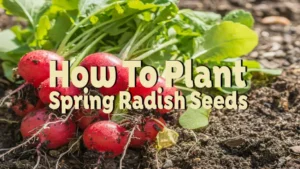


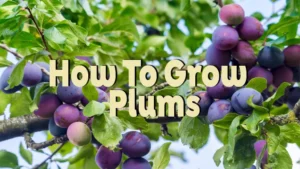


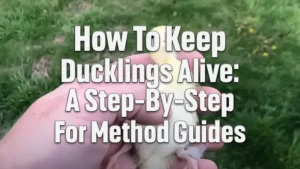





Leave your comment